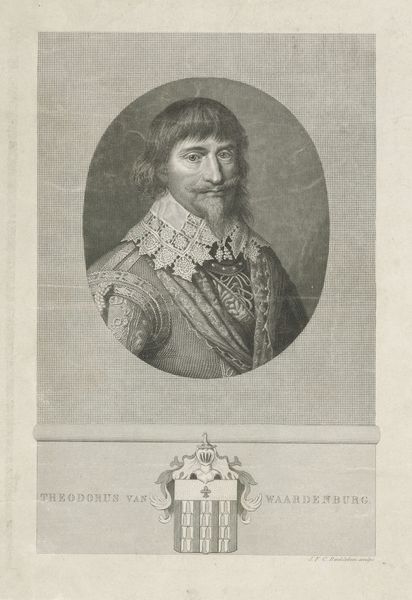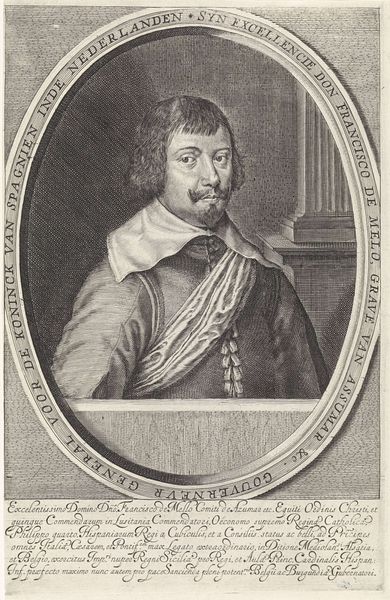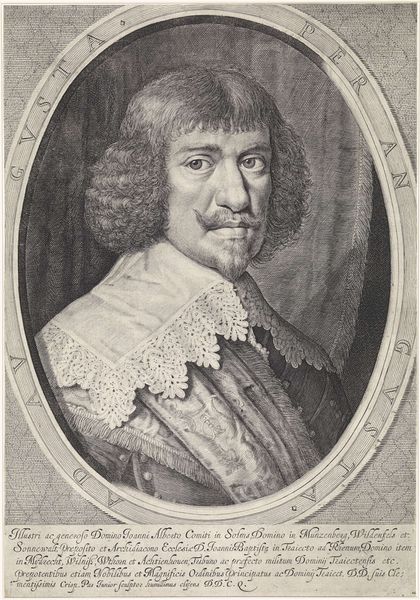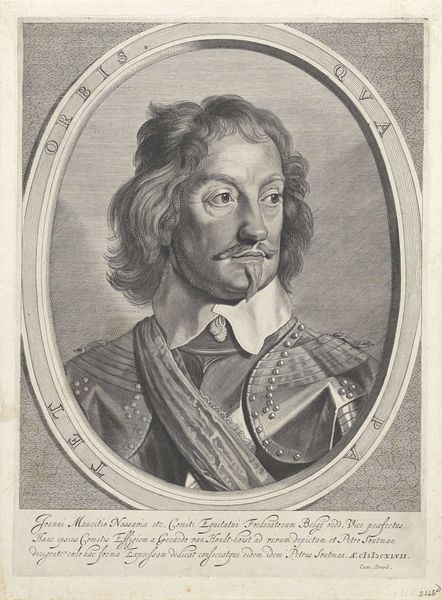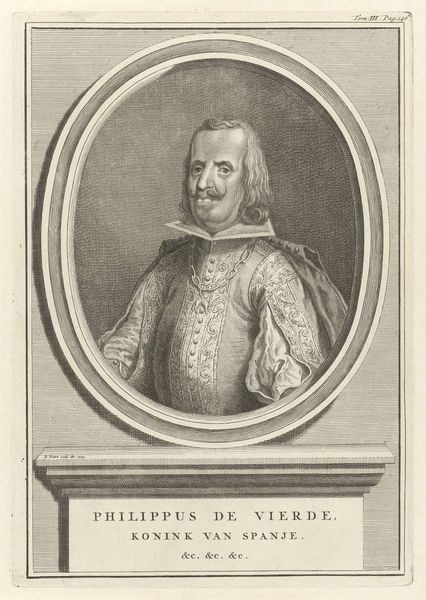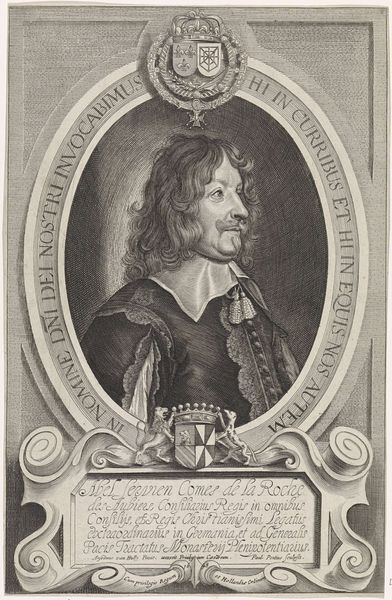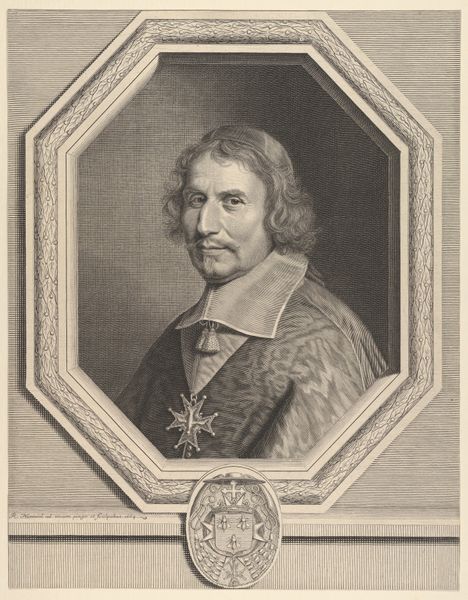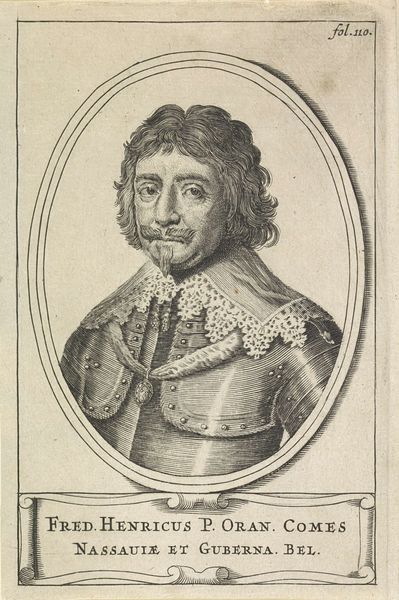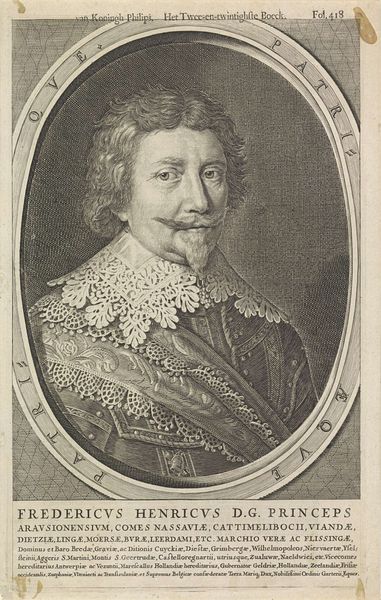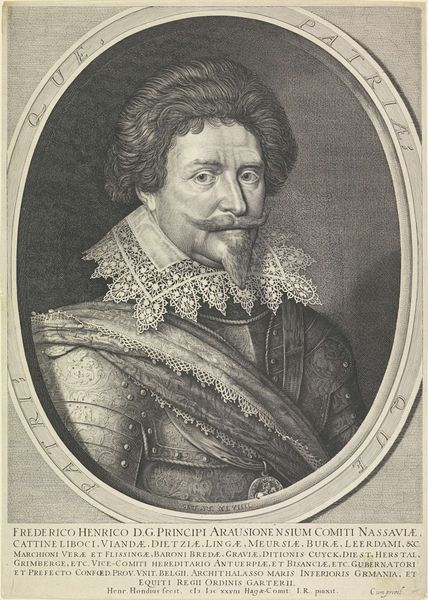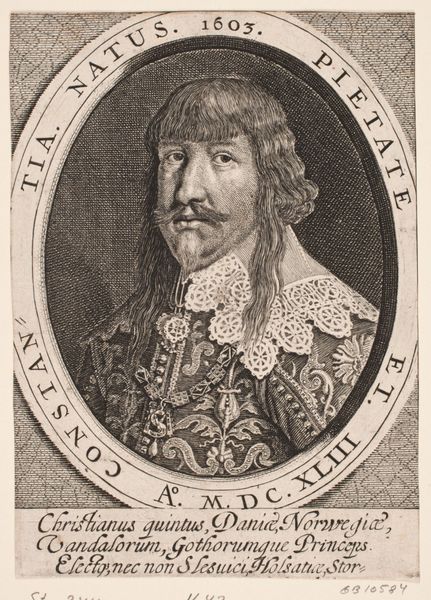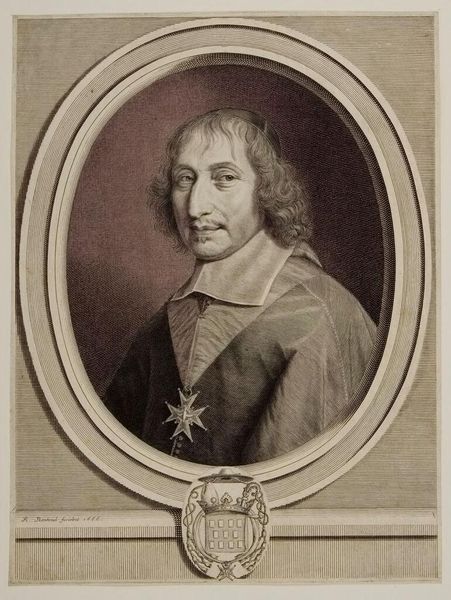
drawing, print, ink, engraving
#
portrait
#
drawing
#
baroque
#
portrait image
# print
#
old engraving style
#
ink
#
engraving
Dimensions: height 415 mm, width 293 mm
Copyright: Rijks Museum: Open Domain
Curator: Before us we have Willem Hondius's "Portret van Theodor van Weerdenburg", created in 1631. It's an engraving, showcasing a Dutch figure from the Baroque period. Editor: My first impression is of a stern but also subtly vulnerable character, despite the lavish display of wealth through his clothing and ornamentation. Curator: Precisely. Hondius was a master of capturing the socio-political stature of his subjects. Van Weerdenburg, as the inscription notes, was associated with the West India Company and held positions of power in Pernambuco. These were sites of significant colonial enterprise. Editor: That colonial context is critical. The opulence on display is directly tied to exploitation and violence, reflected in Van Weerdenburg’s unflinching gaze that holds a certain amount of colonial arrogance. The lace collar, the intricately patterned garment, the implied power–it all speaks to a system built on the backs of others. Curator: And Hondius, while creating a likeness, also crafted a symbol of Dutch power at the time. Prints like these played a crucial role in disseminating images of authority and reinforcing social hierarchies. Consider how they were circulated and consumed within the Dutch Republic. Editor: Right, this wasn't just art for art's sake. It was strategic image-building, reinforcing narratives of dominance. The very act of immortalizing Van Weerdenburg in this manner solidified his position within the colonial power structure and beyond into Dutch society. Curator: Looking closer, we see the mastery of Hondius’s engraving technique – the incredibly fine lines create texture and depth. Notice the use of light and shadow to sculpt Van Weerdenburg’s face, giving him a tangible presence. Editor: That meticulousness adds to the disturbing effect, doesn’t it? All that skill used to immortalize a man complicit in such a violent history. Even the Latin inscription framing him contributes to a self-important declaration of his service “for the good cause, for the fatherland.” Curator: Context really shapes our perception. Initially, one might see a formal portrait of a dignified man. But situating it within the history of Dutch colonialism transforms the image. Editor: Exactly, the art isn't divorced from the ethical questions it raises, particularly when we center those impacted by such historical power dynamics. Curator: It certainly invites further reflection. Thanks for sharing your views. Editor: My pleasure; it’s necessary to remember how deeply these images are entangled with the injustices of history.
Comments
No comments
Be the first to comment and join the conversation on the ultimate creative platform.

